|
Printables |
PowerPoints |
Online exercises |
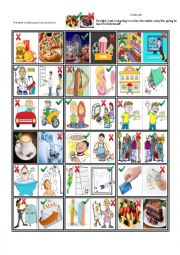
|
Present Continuous Future Tense. Correct the planned actions.
An enjoyable speaking and writing supplement to reinforce asking questions, answering using both affirmative and negative sentences. To get a mixture of both oral and written work I normally have something small enough to hide in my hand. If the object is in the hand not selected, they have to write the sentence. To encourage students, I usually gi...
Level: elementary
Age: 9-100
Type: worksheet
Downloads: 271
|
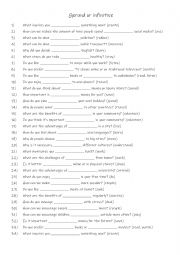
|
B1-B2 Gerund or infinitive practise
Students read the sentences and complete them with either the gerund or infinitive form. Answers on page 2.
Level: intermediate
Age: 10-100
Type:
Downloads: 120
|
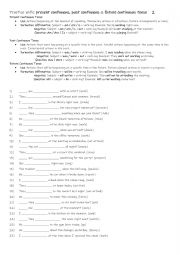
|
A1+-A2 Practise with present continuous, past continuous & future continuous tense 2
First, students need to familiarise themselves with the 3 tenses and use. Then they read the sentences to see which one is needed to complete the sentence using the given verb in (). Each tense is used 9 times! Answers on page 2.
Level: elementary
Age: 8-100
Type:
Downloads: 101
|
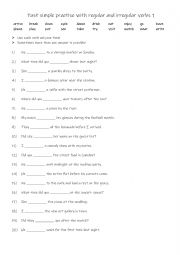
|
Past simple practise with regular and irregular verbs 1
Students first familiarise themselves with the 20 verbs. Then they complete the gap-fill with the correct form of that verb. Answers on page 2.
Level: elementary
Age: 7-100
Type:
Downloads: 112
|
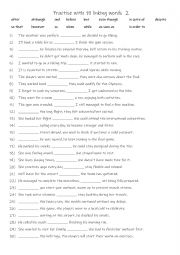
|
A2+-B1 Practise with 15 Linking words 2
Students should learn these linking words because they are essential for creating complex, logical sentences that convey relationships such as contrast (although, however), cause and effect (so that, in order to), and time (before, as soon as). Mastering them enhances writing and speaking by making language more sophisticated and engaging, as stude...
Level: intermediate
Age: 10-100
Type:
Downloads: 111
|
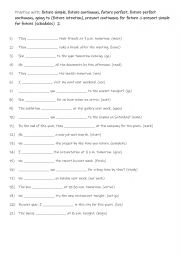
|
B1-B2 Future Simple, Future Continuous, Future Perfect, Future Perfect Continuous, Going to (Future Intention), Present Continuous for Future, Present Simple for Future (Schedules) � 2
First, students need to familiarise themselves with the tenses and check their meaning and use. Then they read the sentences to see which tense is needed to complete the sentence using the given verb in (). Each tense is used 3 times! Answers on page 2.
Level: intermediate
Age: 10-100
Type:
Downloads: 107
|
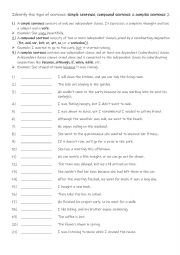
|
A2 Identify the type of sentence simple sentence, compound sentence & complex sentence 2
Students should learn to identify simple, compound, and complex sentences because it helps them write with more variety, organise ideas clearly, understand reading texts more easily, prepare for future learning, and communicate their thoughts more accurately. Each type is used 7 times. Answers on page 2.
Level: elementary
Age: 9-100
Type:
Downloads: 118
|
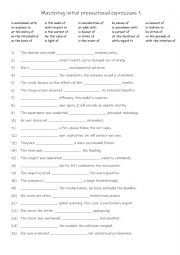
|
B2-C1 Mastering 25 prepositional expressions 1
Mastering initial prepositional expressions is important for improving fluency and precision in English communication. By focusing on prepositions that commonly introduce phrases, you can strengthen your ability to express relationships between ideas, such as time, place, or cause and effect. Additionally, mastering these expressions enhances both ...
Level: advanced
Age: 10-100
Type: worksheet
Downloads: 114
|
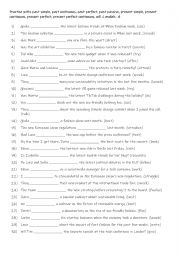
|
B1+-B2 Practise with past simple, past continuous, past perfect, past passive, present simple, present continuous, present perfect, present perfect continuous, will & modals 4
Learning these tenses helps students communicate clearly and accurately in different contexts. The past tenses describe completed actions, ongoing events, or actions that happened before another past event. The present tenses express routines, ongoing actions, and experiences linked to the present. The future tense (will) is used for predictions an...
Level: intermediate
Age: 10-100
Type:
Downloads: 118
|
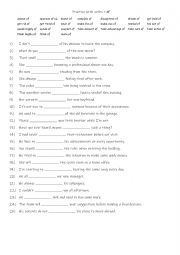
|
B1-B2 Practise with verbs + of
Students familiarise themselves with the 25 verbs + preposition, then they read the sentences to see which one completes the gap-fill. Answers on page 2.
Level: intermediate
Age: 11-100
Type:
Downloads: 105
|
|
|
|
|












